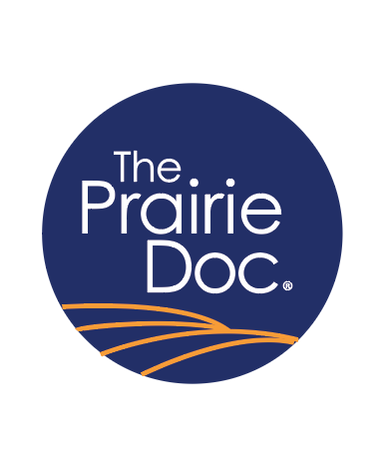Leg Pain that Goes Away with RestBy Richard P. Holm MD
Mr. D, a diabetic patient of mine, came into the clinic with exercise induced leg pain. Iniitally the pain would go away if he stopped exercising, but now it was coming on after walking less than a block. He said, “the pain is meaner and lasts longer after I stop.” The diagnosis of Mr. D’s condition is claudication, a condition where arterial flow to the legs is blocked. I immediately called the vascular specialist for an urgent appointment. Two weeks later the patient returned to the office after having had his blocked arteries dilated with a balloon followed by the placement of stents to hold them open. Happily, he told me he could once again walk for miles without pain. His vascular doctor had started artery dilating meds, lipid meds, and daily baby aspirin. I renewed my encouragement for Mr. D to eat fewer calories, exercise daily, keep his blood sugars controlled, and the most important advice, “Stay away from sitting long on that darn couch. It’s like smoking.” The narrowing process, called atherosclerosis, can be the result of genetic tendencies, diabetes, smoking, high blood pressure, high blood lipids, and even normal aging. Arteries usually narrow gradually, but atherosclerosis can sometimes trigger a clot and a sudden complete blockage resulting in a sudden, and devastating event. It can occur in coronary arteries of the heart, cerebral arteries of the brain, renal arteries of the kidneys, and peripheral arteries of the legs. And, in general, when it’s happening in one, it’s happening in all. Narrowing of blood flow can deprive muscles, skin, ligaments, and nerves downstream of precious blood flow and oxygen, resulting in an aching and agonizing hurt that would bring anyone to their knees. When it happens in the legs, like what happened with Mr. D., the pain symptom is called claudication and the condition is called peripheral artery disease or PAD. PAD affects five percent of all people over 50, but more than 30 percent of all diabetics in the same age group. There can be a curve ball with diabetes or with aging, as these people sometimes lose feeling in their legs and feet due to nerve destruction, setting them up for PAD without pain. The presenting sign then would be painless sores on the feet which won’t heal. This is especially treacherous because, without good blood flow, the healing is very slow and the patient, having no pain, is not as motivated to do the work required to heal ulcers. Leg pain that goes away with rest may not sound so bad, but peripheral arterial disease is one of the most formidable challenges in modern medicine. Protect your Family from Future ScourgesBy Richard P. Holm, MD
Vaccines protect people from illness with minimal risk. Smallpox has been around for many millennia. For thousands of years, the virus caused a deadly illness that killed more than 35 percent of adults and 80 percent of children who contracted the disease. That is until the smallpox vaccine was discovered in 1796. Noting that milk maids rarely got smallpox, British rural physician Edward Jenner found that deliberate infection with the milder cowpox disease provided substantial immunity to smallpox. After decades of improvement to the vaccine and a campaign lead by the World Health Organization, global deaths from smallpox were reduced from two million per year in 1967 to zero in 1977. Human smallpox infections were virtually eliminated from this world because of vaccinations. Another example of clever manipulation of the immune system is the story of a pneumonia vaccine. In a 2003 study, researches noted there had been a huge drop in hospitalizations of the elderly for pneumonia, with 12,000 fewer yearly deaths—especially in those older than 85. This is the result of routine childhood pneumonia vaccination. Although we now encourage two different pneumonia vaccines for those older than 65, the authors of the study claim that it was the routine vaccination of children that was responsible for the reduction of pneumonia in the elderly. Thus, herd immunity profoundly protects immune deficient adults by reducing their exposure to sick kids. There have been dangerous and untrue rumors that vaccinations in children are responsible for autism. Despite the natural human wish to find something to blame for this condition, autism appears in similar rates in children who are given and not given vaccinations. Don’t get me wrong, some vaccines carry risks, but it all depends on the specific type of vaccine and what disease it is treating. Most vaccines are incredibly safe. Take for example the vaccine for Dengue fever, where the risk of side effects is significant. With Dengue vaccine, ten children are saved for every one child who is harmed. Compare that with the measles, mumps, rubella (MMR) vaccine series given in the U.S. which has mild temporary side effects including fussiness, mild fever, injection-site soreness, affecting one child in four. There is temporary mild joint pain, rash, mild glandular swelling, and loss of appetite affecting one in 50, and high fever and platelet problems affecting one in 25,000. Much better than Dengue vaccine. The benefits of the MMR vaccine far outweigh the risks. That is why we routinely give people the MMR vaccine and only give people the Dengue vaccine if they have a high chance of exposure. Vaccination, a clever manipulation of our immune system, protects us from the scourges of the future. Watch On Call with the Prairie Doc® most Thursdays at 7 p.m. central on SDPTV and follow the Prairie Doc® on Facebook and YouTube for free and easy access to the entire Prairie Doc® library. The Trap of PovertyBy Richard P. Holm, MD
The U.S. is rated as the tenth wealthiest country in the world. The financial Web site 24/7 Wall St. clarifies that there are two reasons we are not considered wealthier: 1. We have the world’s largest gap between the rich and the poor, which continues to grow 2. We are the only developed nation in the world without universally available health care. The second issue of health care goes hand in hand with poverty. Poverty, not ethnicity, is strongly associated with mental health problems, crime, overcrowding, malnutrition and illness. Poverty also affects children more than others. All of us would be better off if poverty was reduced. The U.S. Census defines poverty depending on the number in the family. For a single person, poverty means a yearly income below about $12,500 and, for a family of four, that number is about $24,000. In 2016, the U.S. Census found about 13% of our general population is in poverty. When we break that down by ethnicity, 28% of Native Americans, 27% of single parent families, 26% of African Americans, 23% of Hispanics, and 21% of disabled people live below the poverty line. Again, experts clarify that some of the most major problems in our country are associated with poverty, not ethnicity. Contrast this with the growing billionaire class. A Forbes Magazine study stated that the rich are getting richer in a way not witnessed since the first gilded age a century ago. Josh Hoxie, co-author of the Forbes report, said “So much money concentrating in so few hands, while so many people struggle, is not just bad economics, it’s a moral crisis.” For example, the wealthiest 400 people in the U.S. now have more money than the total of the lowest 64% of the U.S. population. Poverty is a U.S. humanitarian shortcoming within our own borders which, I personally believe, is the core issue about which our political leaders should give their greatest attention. I don’t claim to have the answers to poverty, but our country could do better in making available to all: affordable health care, satisfying jobs with living wages, and quality and affordable pre-school and higher-education. I believe political leaders should be intensely studying the issue of poverty and how to support people in need while encouraging opportunities for rewarding work. All of us, rich and poor alike, could personally try to attack this problem, especially locally. Addressing poverty will also address mental health problems, crime, overcrowding, malnutrition and illness; especially the way these issues so severely affect children. Helping all people caught in the trap of poverty will immeasurably raise all boats and make everyone in our society safer and happier. Watch On Call with the Prairie Doc® most Thursdays at 7 p.m. central on SDPTV and follow the Prairie Doc® on Facebook and YouTube for free and easy access to the entire Prairie Doc® library. Tearing Back Pain and an Aneurysmal AortaBy Richard P. Holm MD
His wife almost had to force him to come to the emergency room. She said he was unusually irritable. Although he typically kidded with me, this evening the smile was gone. He complained of a tearing strain and pain into his back (along with a throbbing abdominal discomfort). On exam he had a pulsating abdominal mass and upon listening with the stethoscope I could hear a repeating and prominent whoosh. My patient didn’t have a back strain but rather a dissecting abdominal aortic aneurysm. The aorta is the largest blood vessel which extends out the top of the heart feeding oxygenated blood to virtually every cell in the body. It is a multi-layered, high-pressure hose that arches upward and around, sending tributaries to neck and brain, arms and then down through the chest past the diaphragm. Once it reaches the abdomen, the aorta sends branches everywhere, including the bowels and kidneys before finally splitting into the two femoral arteries providing blood for the legs. We measure the continuous pressure exerted within the aorta in millimeters of mercury, and has, on average, a systolic pressure of 120 and a diastolic pressure of 80. In a hypertensive person, this can be much higher. After years of increased pressure, and, especially after years of smoking, the walls of this mighty vessel can weaken and blood flow can split into one of the layers of the vessel, dissect the layers apart. A weakened aorta can also suddenly rupture, causing immediate death. Most victims are or were smokers and about two-thirds are male. The U.S. Preventive Services Task Force recommends that men aged 65–75 years who have ever smoked should get an ultrasound screening for abdominal aortic aneurysms, even if they have no symptoms. In my practice I listen, especially to every past smoker, male or female, for an abdominal whoosh. More than 15,000 Americans die from this condition each year with the incidence tripling over the last 30 years due to the aging population and the history of smoking in that group. The death rate would be markedly less if proper screening occurred. My patient did not die; he made it to surgery and within hours a new lining to his aorta was provided. Now, something like 10 years later, he is still alive and joking with me. |
Archives
July 2024
Categories |
 RSS Feed
RSS Feed


